A Comprehensive Overview of Autism in Italy
Autism Spectrum Disorder (ASD) presents a complex landscape in Italy, where epidemiological research, diagnostic services, treatment options, and policy initiatives intertwine to shape community understanding and intervention. This article explores the prevalence, research findings, diagnosis, treatment, resources, and policy efforts that underscore Italy’s commitment to supporting individuals with autism and their families.
Prevalence and Epidemiology of Autism in Italy
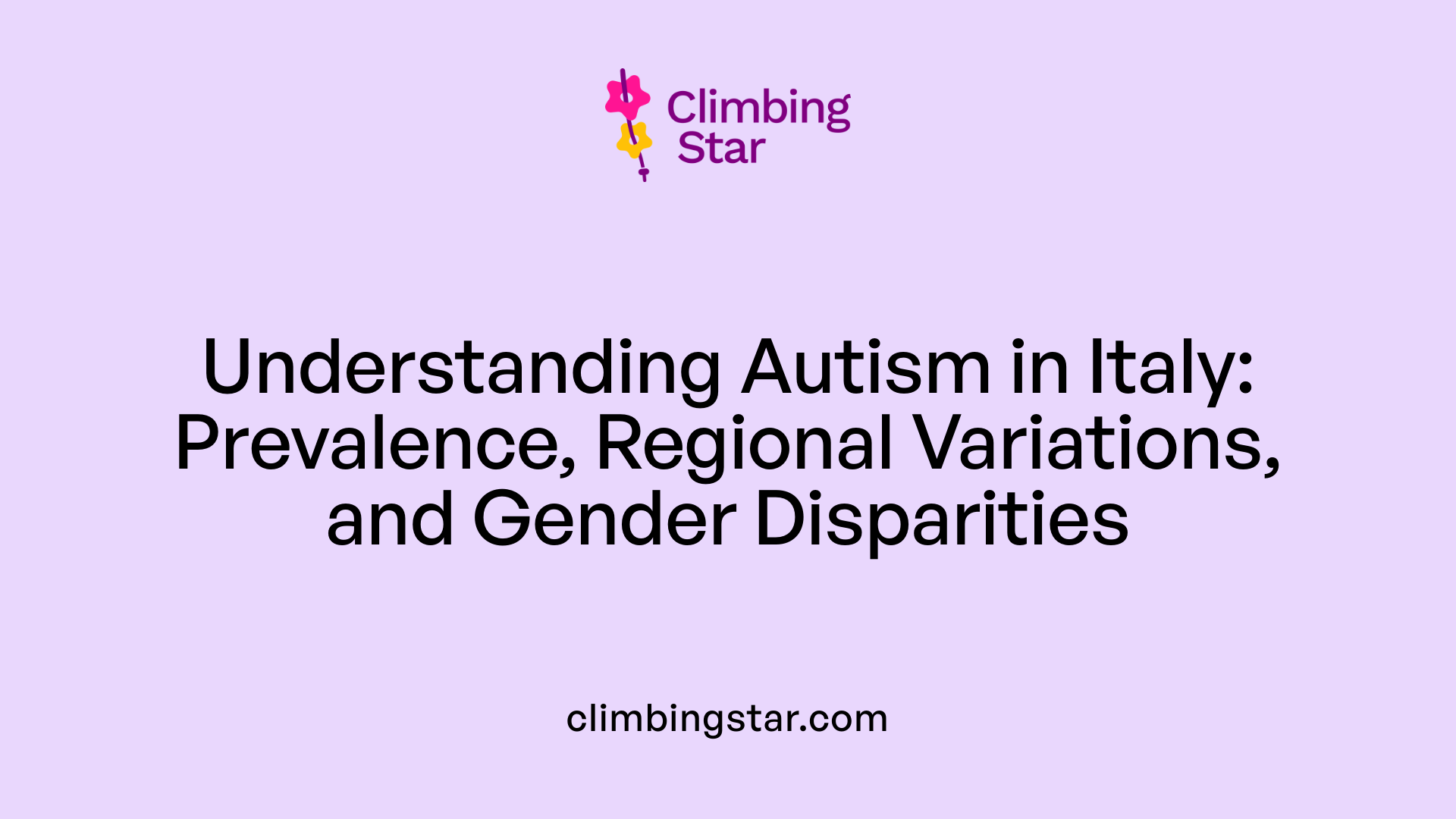
What is the prevalence of autism spectrum disorder in Italy?
Autism Spectrum Disorder (ASD) affects approximately 13.4 children per 1,000 in Italy, based on extensive research covering children aged 7 to 9 years. This means about 1 in every 77 children in this age group is diagnosed with ASD. The study employed a thorough multi-stage screening process that involved questionnaires, such as the SCQ-L, and detailed clinical assessments, including the ADI-R, to ensure accuracy.
Regional variations exist within Italy. In the northern regions, the prevalence is estimated at around 15.4 per 1,000 children. Central Italy reports a prevalence of about 12.2 per 1,000, while the southern areas show a rate of approximately 11.8 per 1,000. These differences might be influenced by local factors, environmental conditions, or access to healthcare and diagnosis.
Additional localized studies offer further insights. For example, research in Pisa indicates a prevalence rate close to 1 in 87 children, while studies in Taranto and high-risk or polluted areas report higher rates, up to nearly 4.89 per 1,000 children. Such data highlight the importance of considering regional context when analyzing ASD prevalence.
Regarding demographics, the male-to-female ratio in Italy aligns with international trends, estimated at roughly 4.4 to 5 males for every female diagnosed with ASD. This gender disparity is consistent across many studies worldwide, emphasizing the need for gender-sensitive approaches in diagnosis and support.
In summary, while Italy’s overall estimate suggests that about 1 in 77 children is affected by ASD, regional differences and study methodologies contribute to variations in the precise figures. Continuous research and surveillance are essential for a better understanding of ASD distribution across Italy.
Research and Studies on Autism in Italy
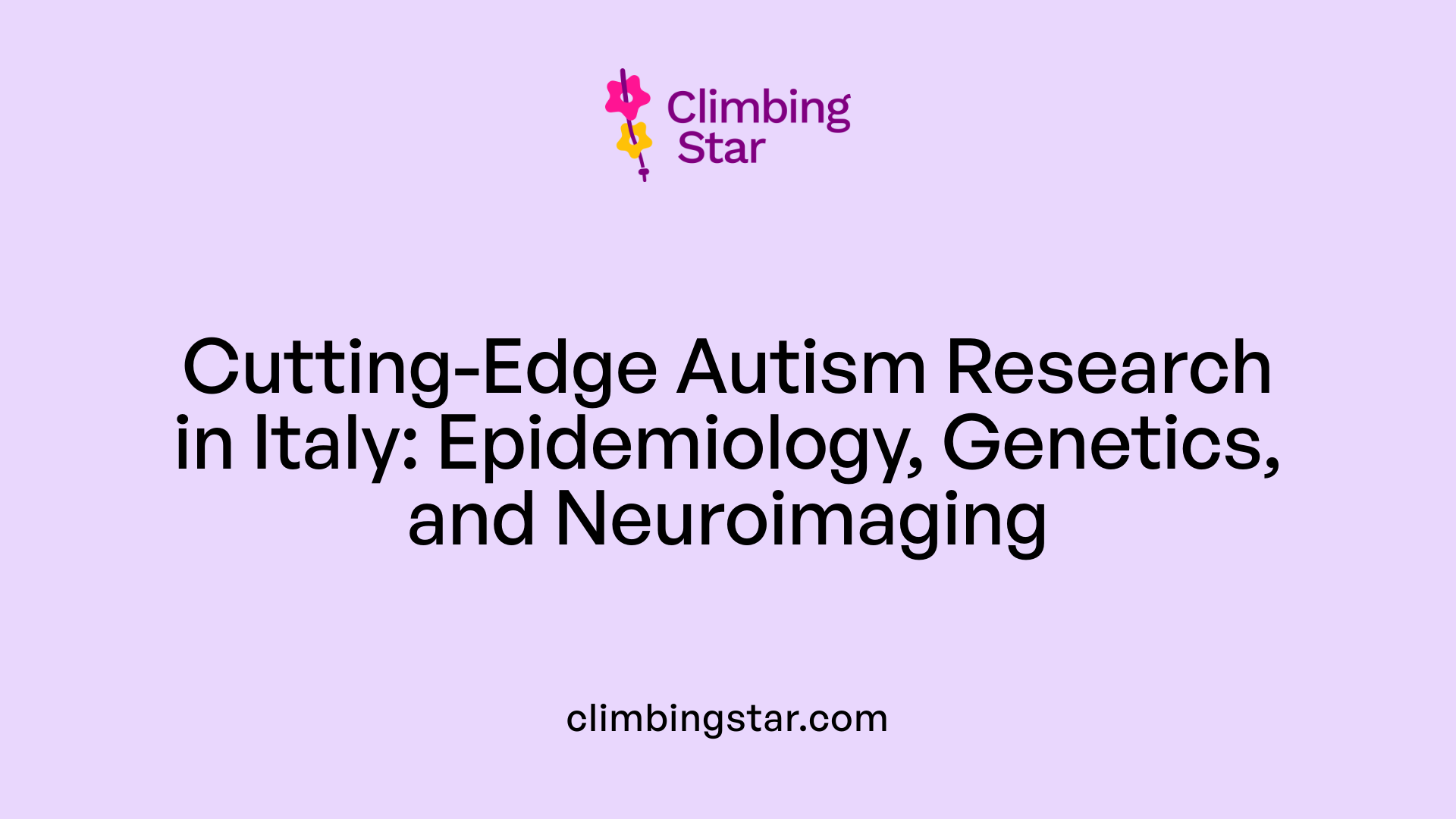
What research findings and studies have been conducted on autism in Italy?
Italy has engaged in extensive research efforts to understand Autism Spectrum Disorders (ASD), combining epidemiological surveys, clinical investigations, and biological studies. Large-scale population studies, for example, have estimated the prevalence of ASD among children aged 7-9 years to be around 13.4 per 1,000 children. Regional data collected from northern, central, and southern Italy shows variation, with prevalence rates ranging from 9.8 to 12.2 per 1,000 children. These studies often utilize validated tools such as questionnaires (SCQ-L) and comprehensive clinical assessments like ADI-R and ADOS-2 to ensure accurate diagnosis.
Research has also revealed that ASD affects boys more frequently than girls, with a common male-to-female ratio of approximately 4.4:1. Many children diagnosed with ASD in Italy exhibit preserved language skills and average IQ scores, indicating that many require less intensive support while still needing tailored interventions.
Italian research initiatives extend beyond epidemiology. Specialized research networks like the TRAIN (Trentino Autism Initiative) connect multidisciplinary teams across Italy to delve into the genetic, neuroimaging, and biomarker aspects of ASD. These collaborations aim to identify biological underpinnings, which contribute to more personalized approaches to diagnosis and treatment.
Furthermore, Italian scientists explore various factors influencing diagnosis rates and support, including regional differences and early developmental markers. These studies provide essential insights for shaping healthcare policies, educational support programs, and targeted interventions. Overall, Italy’s research landscape encompasses a broad spectrum of scientific efforts—from population studies to genetic and neuroimaging research—contributing valuable knowledge to the global understanding of autism.
Assessment, Diagnosis, and Support Services in Italy
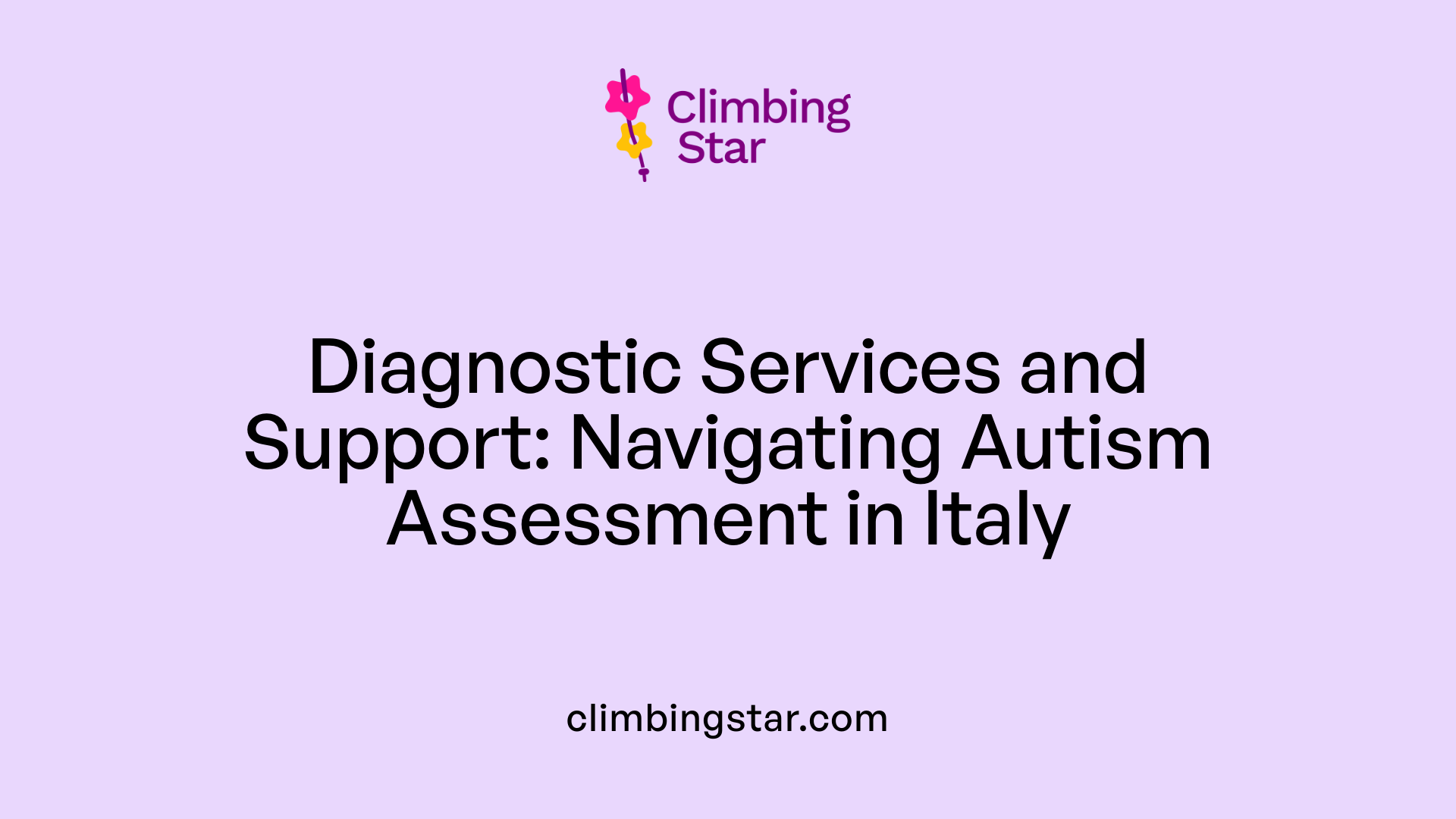
What diagnostic and assessment services are available for autism in Italy?
In Italy, a variety of specialized centers, clinics, and hospitals offer diagnostic and assessment services for autism spectrum disorders (ASD). Organizations such as the Centro Psicodiagnostico Italiano and Therapsy provide comprehensive evaluation services. These include developmental screenings, behavioral assessments, and the use of standardized diagnostic tools. These assessments are carried out by multidisciplinary teams, ensuring a thorough understanding of each individual's needs.
Key tools and assessments used
The primary diagnostic instruments employed are the Autism Diagnostic Observation Schedule (ADOS-2) and the Autism Diagnostic Interview-Revised (ADI-R). These tools are internationally recognized and validated, helping clinicians accurately identify ASD. The assessments may involve behavioral observations, developmental history, and caregiver interviews to capture a full picture of the individual’s development.
Role of multidisciplinary teams and specialized centers
Specialized centers take a collaborative approach, involving psychologists, neurologists, speech therapists, and other healthcare professionals. These teams work together to not only diagnose but also plan personalized interventions tailored to each child's needs. The country’s health system encourages integrated care, reinforcing support for families from diagnosis through ongoing development.
Follow-up and ongoing support strategies
Following diagnosis, families typically receive continuous support. Most services include follow-up consultations approximately six months later to monitor progress and adapt intervention strategies if needed. Support extends beyond clinical diagnosis, incorporating training for families, educators, and caregivers. These efforts aim to facilitate social and educational inclusion, ensuring that children and adults with ASD gain maximum benefit from available resources.
| Service Provider | Diagnostic Tools | Support Strategies | Special Focus |
|---|---|---|---|
| Centro Psicodiagnostico Italiano | ADOS-2, ADI-R | Family training, ongoing monitoring | Multidisciplinary approach |
| Therapsy | Behavioral assessments | Community-based interventions | Holistic support |
| AutismService | Comprehensive assessment | Support in natural environments | Inclusive support programs |
| ABA For Disability Center | ABA protocols | Parent coaching, social integration | Evidence-based therapy |
Italy’s diagnostic services are accessible both in person and online, ensuring wide reach. The country’s health policies promote early identification and continuous support, aligning with international guidelines to improve quality of life and inclusion for individuals with ASD.
Interventions, Treatments, and Support Programs for Autism
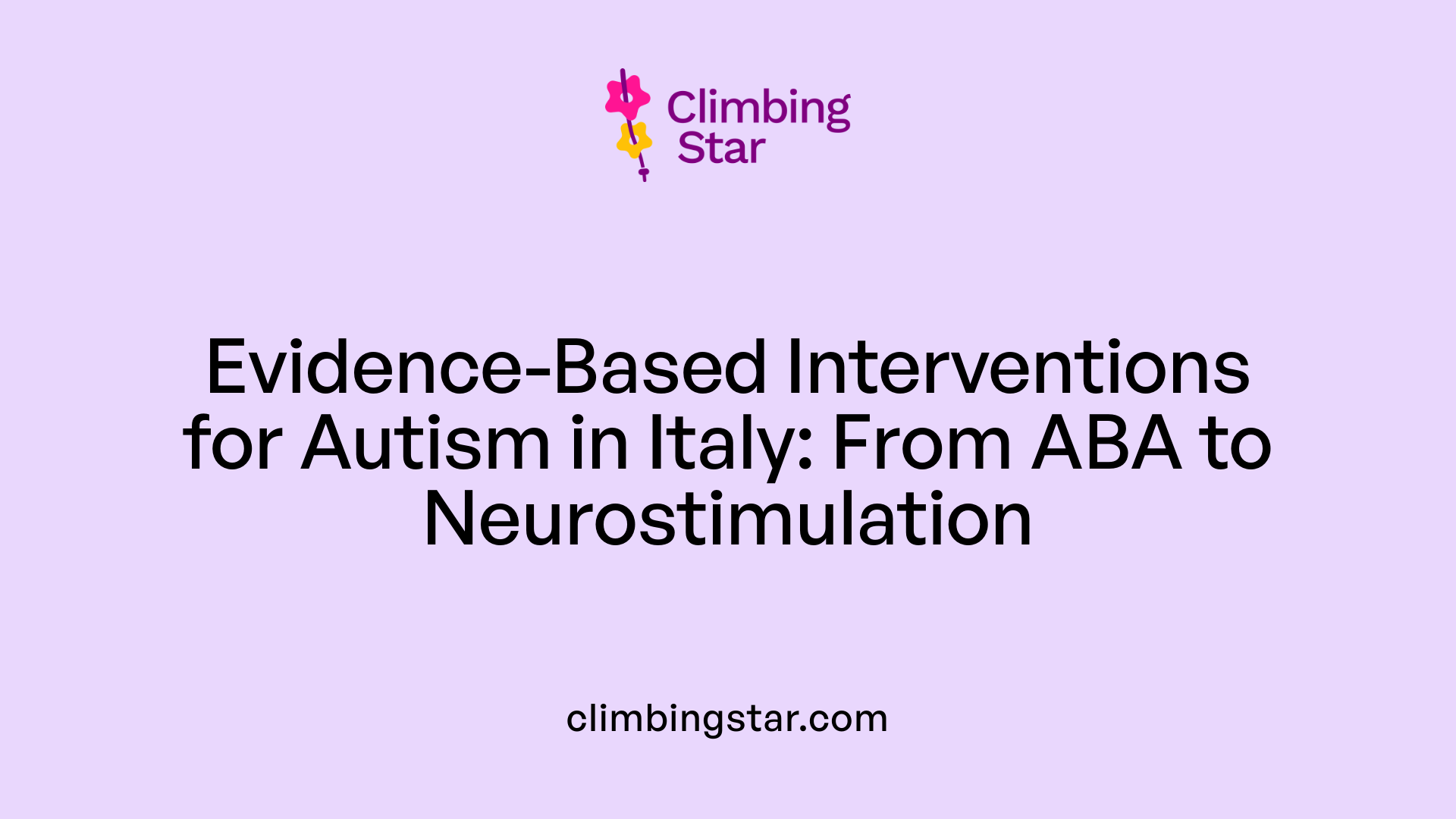
What interventions and treatments, such as ABA, are available for autism in Italy?
In Italy, families and professionals have access to a wide range of autism interventions grounded in scientific evidence. Among these, Applied Behavior Analysis (ABA) stands out as a leading treatment. The ABA For Disability Center, directed by psychologist and behavior analyst Valeria Pascale, provides specialized ABA services that align with the guidelines endorsed by the Italian National Institute of Health. These services aim to support social skills, communication, and behavioral improvements.
Complementing ABA, speech therapy and occupational therapy are commonly integrated into individualized care plans. These therapies help develop language, daily living skills, and sensory integration to meet each person’s unique needs.
Italy also emphasizes multidisciplinary approaches. Advanced clinics, such as the Istituto di Neuroscienze, utilize innovative diagnostics like neurostimulation techniques—including Transcranial Magnetic Stimulation (TMS), transcranial direct current stimulation (tDCS), and photo-bio-modulation—to better understand and address ASD. Dietary interventions targeting inflammation and gut microbiome health are also gaining attention.
Family involvement is central to effective treatment. Early intervention programs focus on supporting children during critical developmental periods. These programs provide coaching and counseling to families, making it easier for them to understand autism and participate actively in their child's development.
Educational initiatives and community support are also vital. Organizations like Autism Friendly Italy offer training for caregivers, schools, and businesses, fostering an inclusive environment. For example, online courses such as 'Primi gesti di accoglienza' teach staff practical ways to welcome and support individuals with autism.
Research and conferences further propel autism care in Italy. The upcoming ASD conference in Sicily (November 2025) aims to spotlight early detection and intervention, emphasizing the importance of the first year of life. This multidisciplinary effort promotes the latest therapies and encourages collaboration among Italian researchers, clinicians, and families.
| Intervention Type | Description | Focus Area |
|---|---|---|
| ABA Therapy | Evidence-based behavioral intervention | Skill development, behavioral management |
| Speech Therapy | Language and communication support | Expressive and receptive language |
| Occupational Therapy | Sensory processing, daily skills | Sensory integration, independence |
| Neurostimulation | TMS, tDCS, photo-bio-modulation | Brain function modulation |
| Dietary Interventions | Nutrition, gut health | Reducing inflammation, supporting brain health |
Through a combination of proven therapies, innovative approaches, and strong family and community involvement, Italy continues to advance its support for individuals on the autism spectrum.
Resources, Training, Awareness, and Policy Initiatives
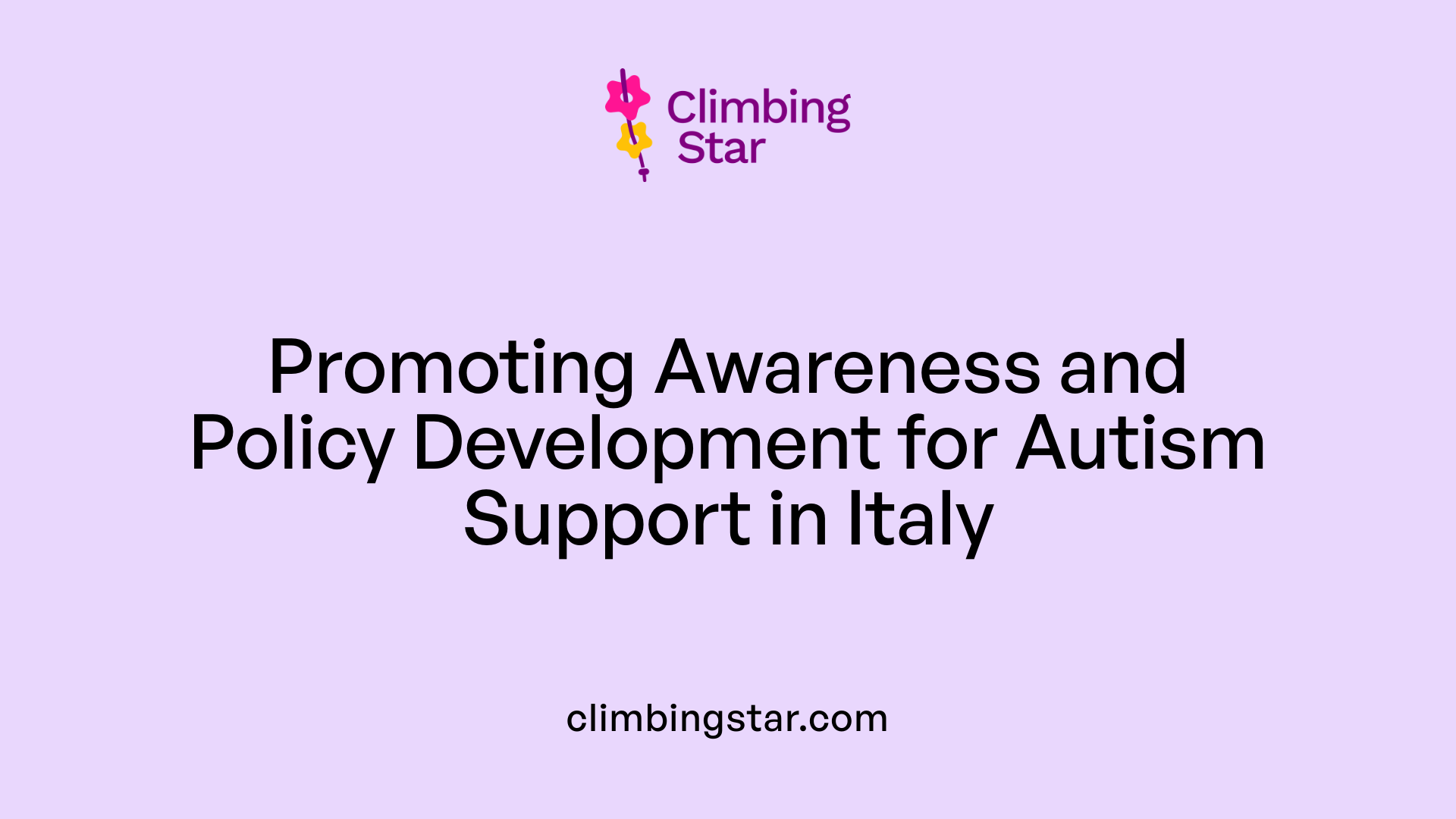 Italy has developed a comprehensive network of programs aimed at increasing awareness, providing training, and supporting individuals with autism across the country. These efforts are guided by national strategies such as the Italian ASD Action Plan (IAAP), complemented by regional ASD plans that focus on ensuring appropriate interventions in various areas.
Italy has developed a comprehensive network of programs aimed at increasing awareness, providing training, and supporting individuals with autism across the country. These efforts are guided by national strategies such as the Italian ASD Action Plan (IAAP), complemented by regional ASD plans that focus on ensuring appropriate interventions in various areas.
One of the significant focuses is on enhancing the capability of healthcare professionals. Extensive training programs are ongoing, especially in Northern Italy, although uneven distribution of services and resources remains a challenge, particularly in the South and the Islands.
Diagnostic tools like ICD-10, ADOS-G, and CARS are used across Italy to assess autism spectrum disorder. Once diagnosed, a range of services—including speech therapy and behavioral interventions—are available, though access and quality can vary between regions.
Awareness campaigns and online communities for parents and caregivers play a vital role in increasing understanding of autism. These initiatives also offer emotional and practical support to families navigating the challenges of ASD.
Organizations such as Els for Autism work closely with Italian institutions to deliver virtual training and develop inclusive community services. These collaborations contribute to broader access to autism resources and promote a more inclusive society.
| Aspect | Programs and Initiatives | Additional Details |
|---|---|---|
| National and Regional Plans | Italian ASD Action Plan (IAAP), regional ASD strategies | Focus on intervention and service development, uneven regional coverage |
| Healthcare Professional Training | Continuous professional education in diagnosis and intervention | Intensified efforts in Northern Italy, with ongoing training initiatives |
| Diagnostic and Support Services | Use of ICD-10, ADOS-G, CARS; speech therapy; behavioral support | Variability in service delivery; aims to improve access and quality |
| Awareness Campaigns | Public campaigns, online support communities | Promote understanding, share resources, foster community engagement |
| NGO Collaborations | Els for Autism, local organizations | Deliver virtual training, create inclusive community programs |
Searching for
Italy's Commitment to Autism Awareness and Support
Italy's multifaceted approach toward autism, encompassing epidemiological research, diagnostic and intervention services, public awareness campaigns, and policy initiatives, reflects a dedicated effort to improve the lives of individuals with autism and their families. Continued investment in research, training, and inclusive programs is vital to ensuring comprehensive support and fostering an inclusive society where autism is understood, accepted, and effectively managed across all regions of Italy.
References
- Who we are – Fondazione bambini e autismo
- Autism spectrum disorder prevalence in Italy: a nationwide ...
- Autism Friendly in Italy
- The Center - ABA for Disability - CENTRO ...
- Understanding and treating Autism Spectrum Disorders (ASD)
- Autism spectrum disorder prevalence in Italy: a nationwide ...
- Autism spectrum disorder prevalence in Italy: a nationwide ...
- Prevalence of Autism Spectrum Disorder in a large Italian ...
- An ecological study shows increased prevalence of autism ...







